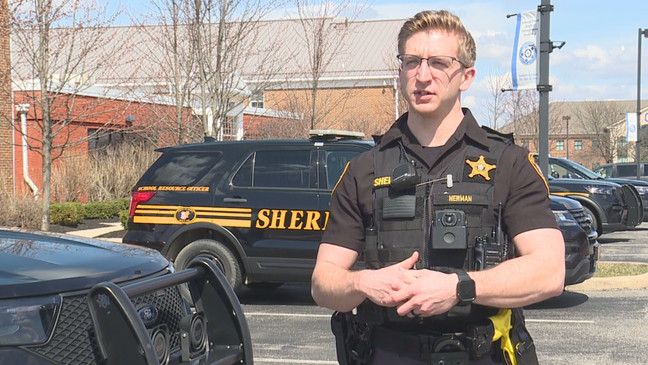News
School security industry booms to more than $3B, but it still remains unregulated

As school shootings continue to dominate headlines, parents and school administrators are increasingly looking for ways to protect children in schools.
The school safety and security industry is now worth more than $3 billion, according to its own internal estimates and those by entities like research and consulting firm Omdia. Hundreds of safety trainers and security professionals sell their expertise to private companies and schools in the Mid-Atlantic region alone.
What can I weaponize in this room? Can I take that trophy and weaponize it? Can I take these scissors and weaponize it?” retried Maryland State Trooper and security consultant Dave Hopp said while demonstrating how he teaches kids and adults to defend themselves, if necessary.
The security consultant trains kids and adults to survive an active shooter event. He sells his training to clients in Maryland, Washington D.C. and Virginia. His method teaches kids and adults to first run from a shooter, if possible, then to hide and finally how to fight, if necessary.
Hopp also teaches battlefield triage, specifically showing clients how to stop a bleeding bullet wound. He sells an app that walks users through the steps of bleed care.
For the layperson in the field, it could absolutely save a life,” Hopp said.
Despite surging demand for his skills and products, Hopp said he’s not in it for the money (He would not disclose clients or the costs of his courses).
The security industry’s trade association tells its 1,300-member business that school safety represents the industry’s number one current growth opportunity.
One of the largest school safety training companies, Navigate 360, links administrators to «funding options» on its website. These are taxpayer-funded state and federal grants, most of which the security industry lobbied for.
This is a very unregulated industry. We don’t have a lot of evidence [of] whether any of this works. So ultimately, you have a ton of people opening their wallets and spending a ton of money to feel safer without actually knowing if they are safer,” said Jaclyn Schildkraut, the regional gun violence research director for the Rockefeller Institute of Government.
Schildkraut has written three books on mass school shootings. Her research into school violence shows the number one life-saving device for anyone in an active shooting is a locked door.
“We don’t necessarily want to advocate for students to run when we know being secured behind that door is their best option,” Schildkraut said.
Yet many school districts and state departments of education, including Maryland, reference the Department of Homeland Security’s 2008 school safety recommendations as best practice in an active school shooting.
The 15-year-old document recommends, «Run, Hide, and Fight» as the best practice.
Many businesses selling active shooter training cite it, too. Hopp also said his years of experience in law enforcement convinced him «Run, Hide, Fight» is still the best practice. There are no universal standards, licensing or regulations overseeing mass shooting preparation training in the U.S. Hopp said that won’t stop him from sharing his expertise and trying to give potential gun violence targets the tools to save lives.
“I feel completely adequate teaching based on my experiences, my skills,” Hopp said.

